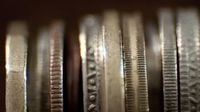In a quiet field near Bunnik, in the heart of the Netherlands, history revealed itself in a way that few could have anticipated. Back in October 2023, two metal detectorists, Reinier Koelink and Gert-Jan Messelaar, unearthed a hoard of 404 gold and silver coins—a find that would ripple across the worlds of archaeology, numismatics, and European history. Now, two years later, the significance of this "Bunnik hoard" is still being unraveled, with the coins already taking pride of place in the National Museum of Antiquities in Leiden and sparking new debates about the Roman conquest of Britain and the logistics of imperial expansion.
According to Utrecht University and the Utrecht Landscape and Heritage Foundation, the discovery was nothing short of monumental. The coins, dating back about 2,000 years to the early Roman Empire, offer a rare, datable snapshot of a moment when armies crossed the North Sea, fought, and returned home with pay and prizes. The youngest coins were minted under Emperor Claudius, directly tying the find to the invasion of Britain in 43 CE—a campaign that would forever alter the map of Europe.
The composition of the hoard is as remarkable as its timing. Among the 404 coins are 44 British gold staters, many bearing the Latinized name of King Cunobelinus, who ruled from approximately 5 to 40 CE. These Celtic coins, used in southeastern Britain, sit alongside 72 Roman gold aurei—high-value coins typically used for large payments—and 288 Roman silver denarii, the standard pay unit for soldiers. There’s even a solitary Numidian denarius, a coin from North Africa, hinting at the vast reach of Roman trade and conquest. As Anton Cruysheer, lead archaeologist at the Utrecht Landscape and Heritage Foundation, put it, “This is the first time that physical evidence of the return of the troops has been found. That is new information.”
What’s truly striking is the state of the coins. Many Roman pieces span from the reign of Augustus to Claudius, but some are in pristine, uncirculated condition. Two gold aurei are even die-matched, meaning they were struck from the same engraved tool—often a sign of a single minting batch. Their crisp surfaces suggest they were buried soon after payout, likely around 46-47 CE. This detail, confirmed by both Utrecht University and the Leiden museum, indicates the coins were not the slow savings of a lifetime, but rather a pay packet and prize bundle assembled quickly—perhaps the spoils and wages of a high-ranking Roman officer returning from the British campaigns.
The hoard’s context is equally intriguing. The coins were found less than 30 centimeters (about 12 inches) below the surface, scattered by ploughing but originally buried in a small pit near a water channel. This spot, while along the Lower German Limes—the Roman frontier line across the Netherlands—was notably distant from any known Roman fortifications. Archaeologists suggest it could have been chosen for a hurried hide or perhaps as a ritual offering, a common practice for soldiers giving thanks after surviving a long campaign. As noted by the Utrecht Landscape and Heritage Foundation, “A safe return from a long campaign could move someone to give thanks with hard cash.”
Once the coins were reported to Utrecht’s heritage service and the Portable Antiquities of the Netherlands, a team of archaeologists and specialists moved quickly to excavate, clean, and document them. The Bunnik hoard is now cataloged in Oxford’s Coin Hoards of the Roman Empire (CHRE) database, ensuring its place in the global record of ancient currency finds. Most of the coins have entered the National Archaeology Collection in Leiden, where they are now on public display, allowing visitors to connect directly with a pivotal moment in European history.
The academic community has been abuzz with the implications of the find. The Bunnik hoard is unique on mainland Europe; never before has such a mixed stash of Roman and British coins been found outside the British Isles. The only comparable discovery is the Helmingham Hall Hoard in Suffolk, England, unearthed in 2019, which also contained British staters of Cunobelinus alongside Roman coins from the same period. The parallel between these two hoards strongly supports the theory that they represent the personal wealth of officers or soldiers involved in the Claudian campaigns, moving wealth and currency across the empire’s frontiers.
For historians and numismatists, the Bunnik hoard provides direct evidence of Roman military logistics, pay practices, and the movement of troops. The Lower German Limes, once seen mainly as a defensive line, emerges here as a crucial artery for trade, communication, and military deployment. The coins themselves tell a story: campaign pay did not arrive in a single form. A commander might add a donativum—a special cash gift—to regular wages, and British staters likely came home as captured money or forced tribute. The mix of coinage reflects the economics of war as clearly as any inscription or ancient text.
There’s also a local angle to this global story. For the region around Utrecht, the hoard anchors the landscape to world events. A quiet Dutch field is transformed into a ledger of war, wages, and return, giving residents and visitors alike a tangible connection to the ancient past. The discovery highlights the importance of robust heritage protection policies and responsible metal detecting, ensuring that such finds are properly documented and preserved for future generations.
Looking ahead, the coins are undergoing intensive conservation, cleaning, and cataloging to prevent degradation and prepare them for further study. Academics are already planning in-depth research, including numismatic analysis, metallurgical studies, and historical contextualization. Once this painstaking work is complete, the Bunnik hoard is expected to become a centerpiece exhibition in a prominent Dutch museum, drawing thousands of visitors and fueling new educational initiatives.
The long-term impact of the Bunnik hoard reaches far beyond the walls of any single institution. It enriches our understanding of Roman imperialism, frontier life, and the complex interplay between conquerors and conquered. It also serves as a reminder of the hidden histories lying beneath our feet, waiting to be discovered. As researchers continue to analyze and interpret this extraordinary find, the coins of Bunnik will remain a touchstone for understanding the ancient world—a legacy etched in gold and silver, resonating for generations to come.




